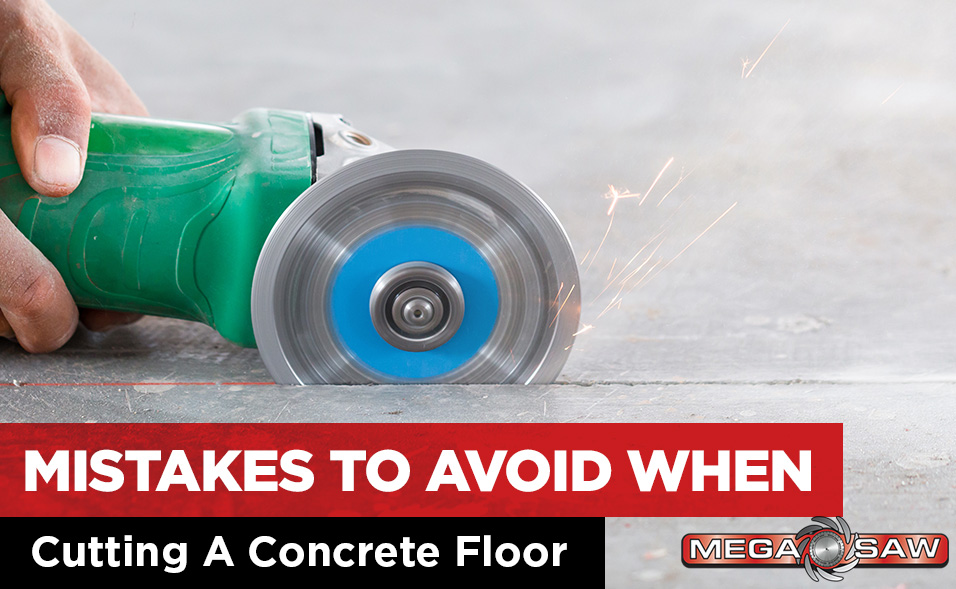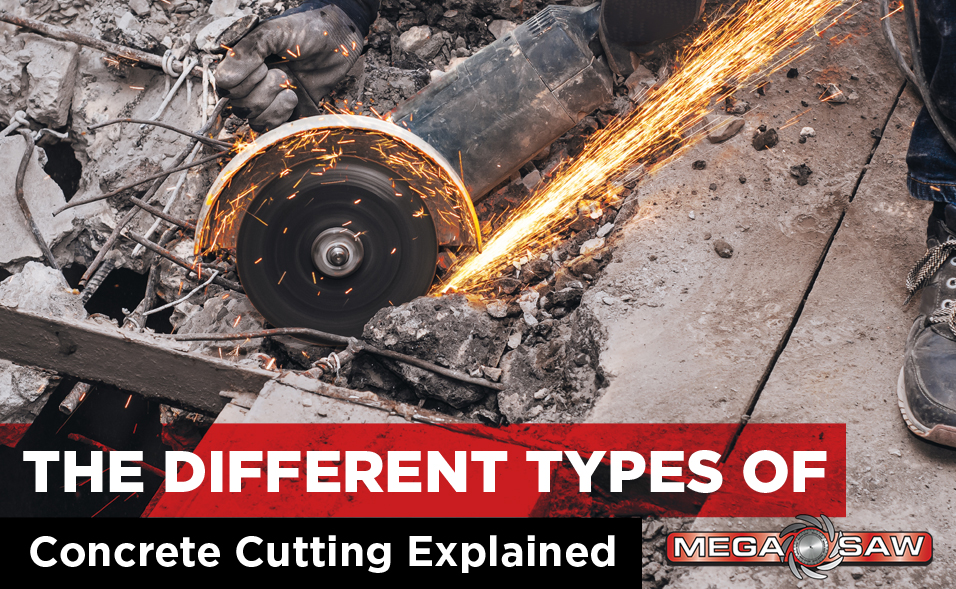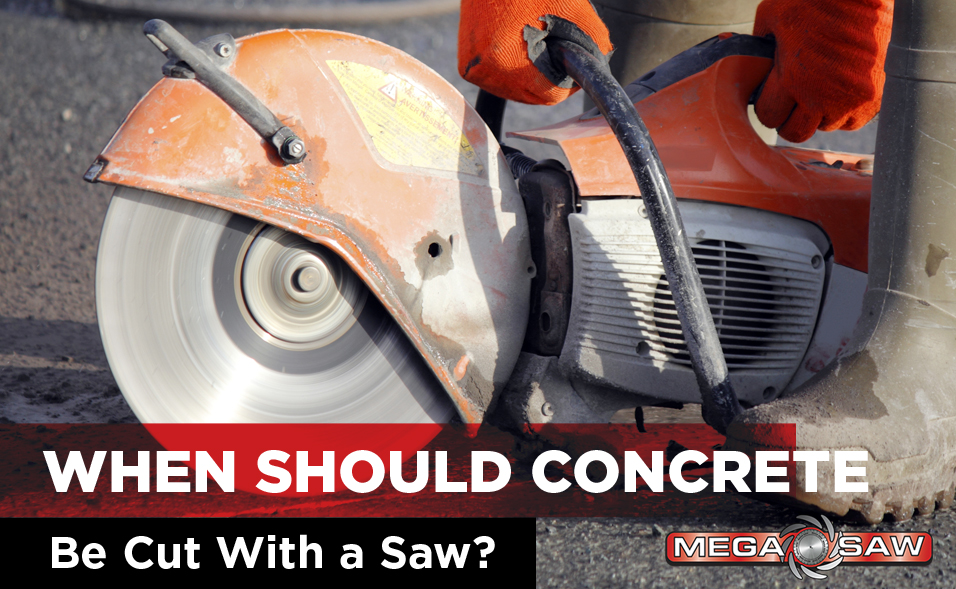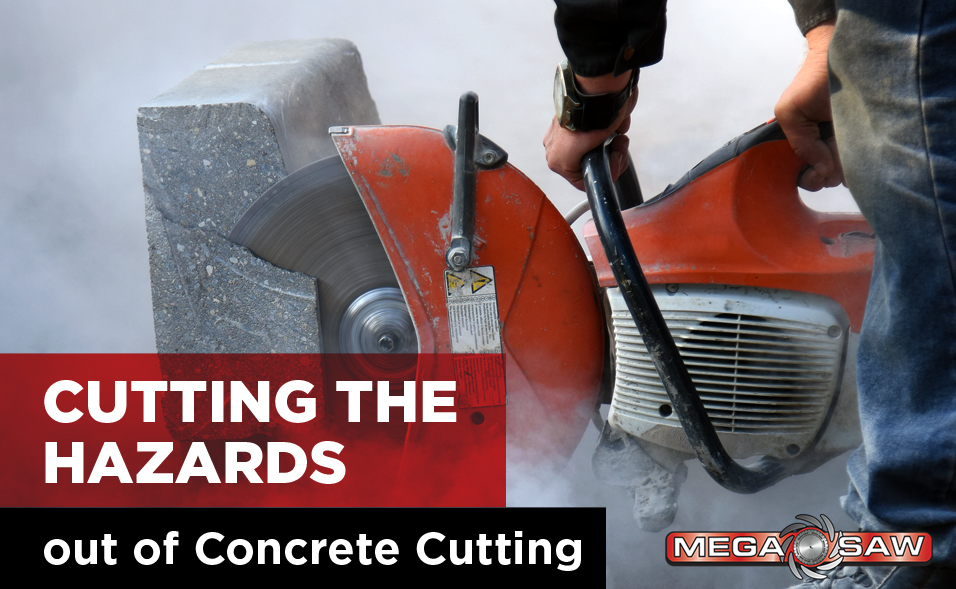Cutting concrete is a very hard task that requires a large amount of expertise, patience and precision.
This is not something that you can do on a whim without giving it much thought.
If you want to do the job safely and efficiently, it would be a good idea to avoid making any of the following mistakes.
Not Starting With A Single Cut
If you begin this task with a single surface cut, it will act as a guide and prevent you from going off course while you are using the saw.
In addition, it will break into the concrete in such a way that it will ease some of the surface tension. As a result, you will find it much easier to cut through.
Working Without Safety Gear
Do not go into this acting like you are invincible.
Regardless of how large or small the job is, you should always wear protective gear when you are working with concrete.
This is because there will be dust and debris all over the place and it is best avoided.
The main way to keep yourself safe would be to wear earmuffs, safety goggles and a pair of gloves.
Additional clothing may be worn, but these items are absolutely essential.
Using Blades That Aren’t Sharp Enough
It would seem like sharper blades would be more dangerous since they can cut through surfaces easier, but the opposite is actually true.
If you decide to use a blade that isn’t quite up for this task, you are significantly increasing your chances of being injured since it will be more difficult to saw through the floor.
Aside from the risk of being cut, dull blades take longer to get the job done, which means extended exposure to concrete dust.
As soon as you notice blades are being worn down, it is best to swap them for sharper ones.
Forgetting About What Lies Beneath
You shouldn’t make an assumption that the floor you are cutting through is extremely deep and there are no obstructions beneath the surface.
Try being proactive and choosing equipment that is strong enough to cut through anything that may be there, including wires, pipes and rebar.
While you cannot be certain that your sawing will uncover these materials, it is better to be prepared.
Failing To Control Dust
This is something that is always important, but more so when you are working on a concrete floor that is located indoors.
If possible, you should consider wet cutting, which greatly reduces the amount of dust that is produced.
In the event that this is not an option, you should seal off the rooms where you are working from the rest of the structure.
In addition, you have to make sure that you vacuum well once the job is done. This will prevent harmful silica-laden dust from causing issues down the track.
Beginning With the Proper Planning
You should never start a job of this magnitude without making some plans ahead of time.
From mapping out everything that needs to be done to using chalk to mark the places where you will be cutting, being proactive means that you will be far more efficient when it comes to getting the job done.
It is not as easy to cut through concrete as it may seem and there are many instances where people are injured and/or not as efficient as they can be.
If you want to reduce the chances of running into problems and being hurt while you are completing the task at hand, it would be a good idea for you to avoid making any of the errors that were discussed above.
If you are looking for a specialist concrete cutting company who uses only the best practices to get the job done right, then please call us at Megasaw on 1300 920 419 or contact us through our website www.megasaw.com.au/contact-us/










